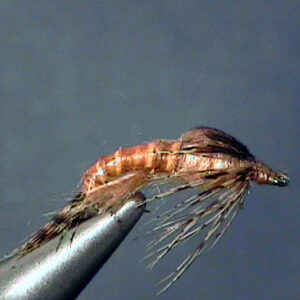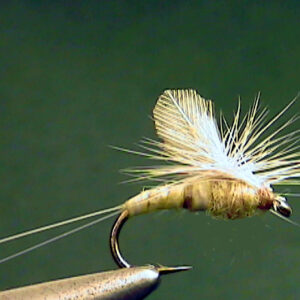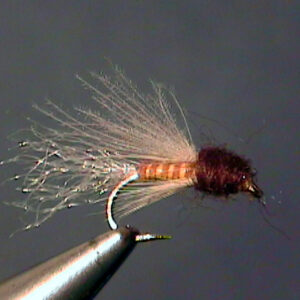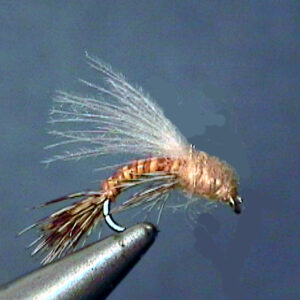Hook Size: 14
The Perfect Fly Eastern Pale Evening Dun Spinner is a imitation of the spinner stage of life of the mayfly. Once the dun reaches the banks, trees or bushes, it molts into a spinner, or the sexually mature adult. The males and females return to the water and mate in mid air, and eventually fall dead on the surface of the water where trout can easily dine on them. It should be fished on the surface and treated with floatant.
Mating takes place near the banks, trees and vegetation along the banks of the
stream. Female spinners usually fall just before dark but during daylight hours.
Sometimes they fail in sparse numbers, but of course this greatly depends on the
numbers that hatch. It can be substantial and the good part from a fly fishing
standpoint is it occurs in a relatively short time span.
If it’s very cloudy or raining lightly, you may be able to fish the spinner fall an
hour or two prior to dark. The spinner fall starts earlier than normal under low
light type conditions. The female spinners deposit their eggs in the same places
they emerge from. As mentioned under the emerger section, this is the moderate
to slow sections of water within the stream. In tailwaters with smooth flows, this is
often difficult to pinpoint but usually there’s enough light that you can see them
falling on the water.
The males are the first ones to fall. They fall and die as soon as they mate. They
rarely fall on the water though. They are more apt to fall along the banks of the
stream.
If the lighting conditions are very low and you cannot see the spinners falling, you
should fish the heads of pools and eddies where the spent spinners tend to
congregate. The spinners are almost impossible to see on the water. If there has
been a good hatch, there will be a good spinner fall. The sure fire way to know is
to use a small skim net made to pick up spinners and other insects from the
surface of the water.
Spinner Presentation:
A down or down and across presentation of the spinner that is allowed to drift
into the calmer water is usually the best method of presentation. In the slower
moving water, the idea is to let the trout see the fly before you spook them with
your leader, tippet or fly line. That also means long, light leaders should be
used. It’s often necessary to go to a 5 or 6X. In some spring creeks it often takes
a 7X tippet to be successful.
If it is near dark, you may want to place a more visible parachute type fly about
two feet ahead of the spinner. This will help you detect the takes easier. You can
use our Perfect Fly Eastern Pale Evening Dun for this. Often after the trout get
used to seeing the duns and will take the dun as well as the spinner imitation.
Copyright James Marsh 2013




